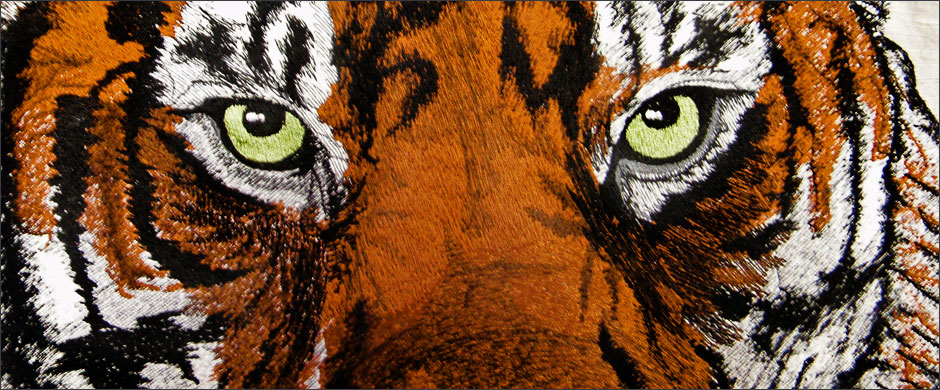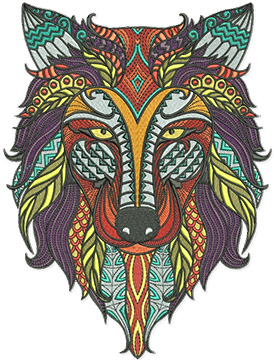Custom Digitizing for Embroidery: Customized to Your Demands
Custom Digitizing for Embroidery: Customized to Your Demands
Blog Article
Explore Various Types of Needlework Digitizing Methods
Needlework digitizing has progressed significantly throughout the years, offering a myriad of methods to bring layouts to life in the digital realm. From the detailed artistry of typical hand embroidery digitizing to the precision of the boxing strategy, and the benefit of auto-digitizing software programs, the choices are substantial. The realm extends to extra innovative techniques like photorealistic embroidery digitizing and the fascinating realm of 3D embroidery digitizing. Each method brings an one-of-a-kind collection of possibilities and challenges to the table, making the exploration of these methods an engaging trip for those in the needlework globe.
Standard Hand Needlework Digitizing
Conventional hand needlework digitizing includes the procedure of transforming detailed hand-stitched layouts right into electronic styles for maker needlework. This method requires knowledgeable craftsmens to thoroughly examine the handcrafted design and after that utilize specialized software application to recreate it in a digital layout. Each stitch, shade, and detail should be carefully converted to ensure that the significance of the original hand embroidery is maintained in the digital version.
Among the crucial challenges of conventional hand embroidery digitizing is recording the details and nuances of the handmade design. Digitizing for Embroidery. Craftsmens need to possess a deep understanding of various needlework techniques, such as satin stitch, chain stitch, and French knots, to accurately replicate these strategies in the digital world. In addition, they need to have an eager eye for information to make sure that the digital design maintains the exact same level of virtuosity and craftsmanship as the initial hand-stitched piece
Punching Strategy
To effortlessly transition from typical hand needlework digitizing to the punching strategy, artisans must currently concentrate on converting the complex digital styles right into directions that needlework machines can translate. The punching technique entails utilizing specialized software to create electronic documents which contain commands for the needlework machine to adhere to. This procedure calls for a deep understanding of not just the design itself yet also the abilities and constraints of the needlework device.

Auto-Digitizing Software Application Programs
Embroidery digitizing has been transformed by the development of auto-digitizing software application, supplying craftsmens with innovative devices to transform electronic styles into embroidery device instructions efficiently. Auto-digitizing software application use algorithms to analyze electronic photos or vector documents and produce embroidery layouts immediately. These programs permit quick and accurate conversion of complex layouts right into stitch patterns, saving effort and time for embroiderers.
Among the key advantages of auto-digitizing software program is its straightforward user interface, making it easily accessible to both novices and skilled digitizers. These programs typically include attributes such as stitch editing and enhancing tools, thread shade matching, and the capacity to preview the last stitched design. Additionally, auto-digitizing software can take care of intricate layouts with numerous shades and detailed details, creating high-grade embroidery data suitable for numerous clothing and fabric jobs.
While auto-digitizing software uses convenience and performance, it is crucial for individuals sites to recognize the restrictions of automated digitizing. Fine-tuning and manual modifications may still be required to accomplish the desired needlework high quality, particularly when dealing with complex or unique styles. By leveraging the capabilities of auto-digitizing software program alongside hands-on digitizing methods, artisans can boost their embroidery digitizing process and create magnificent embroidered items.
Photorealistic Embroidery Digitizing
Utilizing sophisticated electronic imaging methods, attaining photorealistic outcomes in embroidery digitizing has actually become a desired skill amongst modern artisans. This strategy includes transforming high-resolution images right into detailed stitch patterns that carefully resemble the initial design, leading to helpful site needlework pieces that exhibit realistic information and deepness.
To achieve photorealistic embroidery digitizing, craftsmens must have a keen eye for information and a complete understanding of how different stitch kinds and densities can influence the last outcome. By thoroughly mapping out each shade and color in the image, embroiderers can produce a digital data that overviews the needlework maker to reproduce the subtleties of the initial image properly.
Photorealistic needlework digitizing is especially prominent in producing personalized layouts for garments, home decoration, and art items where catching the essence of a photograph or artwork is essential. This technique enables craftsmens to change memories, landscapes, pictures, and complex art work into spectacular embroidered masterpieces that display a mix of traditional craftsmanship and sophisticated technology.
3D Needlework Digitizing
With the improvement of digital imaging techniques in achieving photorealistic outcomes in needlework digitizing, the exploration of 'D Embroidery Digitizing' offers a new measurement to the ins and outs of style replication. 'D Needlework Digitizing' describes the three-dimensional digitizing method that adds deepness and structure to embroidery designs, creating an extra realistic and visually enticing final product. This strategy utilizes software that simulates the result of light and shadow on the embroidery design, enhancing its total aesthetic impact.
One of the vital advantages of 'D Needlework Digitizing' is its ability to make layouts look more natural and dynamic. By including deepness to the embroidery design, the last product shows up more reasonable and captivating (Digitizing for Embroidery). In addition, this technique permits even more creative flexibility in layout implementation, enabling embroiderers to go to these guys trying out different appearances and effects that were previously testing to achieve
Final Thought

Report this page